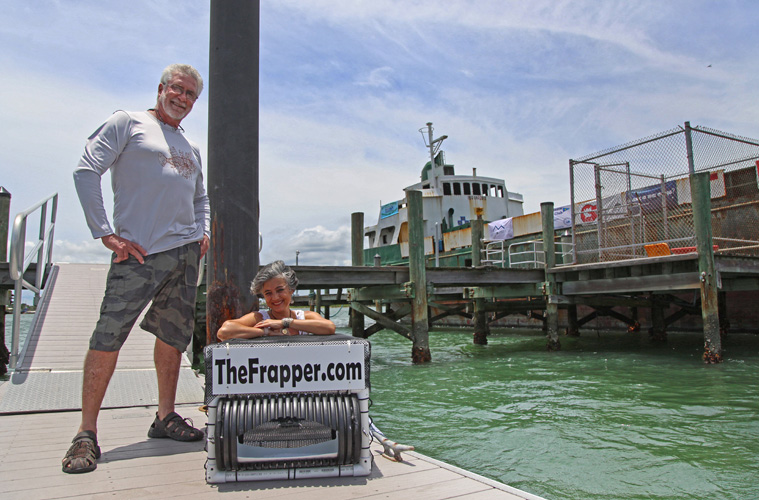
Lionfish – the peppermint-striped, venom-spiked aquarium fish turned pesky predator –pose a high risk of invading the Indian River Lagoon and decimating its ecology, despite broad-based efforts to spear, hook, and cook them out of our ocean and estuarine waters.
These natives of Indo-Pacific waters arrived in Florida in home aquariums as far back as the 1980s, and then were set free when they either grew too large or ate everything else in their tanks.
Today they have spread as far north as Cape Cod, south to Brazil, and east to the Mediterranean. They are voracious, indiscriminate predators who eat more than 70 native fish species, ruin coral reef ecosystems from the Keys to the Caribbean, and produce more than two million eggs each year – from a single female.
Resource managers in Florida and beyond have deployed nearly every possible weapon at their disposal to control the invaders – spear fishing derbies, liberal fishing rules, commercial marketing incentives, import bans, even a popular cookbook – but concede they are not winning the battle.
Now though, Vero Beach lionfish-hunting couple Bob and Maria Hickerson has designed a high-tech device employing facial recognition that is intended to attract large numbers of lionfish to a single spot so they can be harvested by spear fishermen and divers with nets.
The device is not a trap – lionfish traps are prohibited by Florida law – but a fish attracting device, or FAD, designed to attract only lionfish, not other valuable native game fish.
Four of the experimental devices will be deployed when the 180-foot freighter Voici Bernadette is sunk as an artificial reef off St. Lucie County on June 23.
The rectangular two-foot-wide, 1 ½ -foot-tall, three-foot-deep PVC-and-mesh boxes will be fastened to the ship’s deck before it goes down.
“The freighter is an enormous fish attracting device itself,” Bob Hickerson said. “So we think they’re going to show up in the eddies created by currents that move across the reef. We cannot catch anything in this FAD. There is no bait. It will be chained to the deck so it can’t be removed.”
The first-of-its-kind experiment in Florida waters is being overseen by Jim Oppenborn, St. Lucie County’s artificial reef chief who said “having potential for taking lionfish out of circulation is a good thing.”
Once the ship sinks 100 feet to the sea floor, Oppenborn expects the Hickersons and other volunteer divers to monitor the FADs regularly and document whether lionfish – or any other species – use them.
If commercially- and recreationally-important fish such as snapper or grouper are found in the FADs, Oppenborn said he will shut down the experiment.
He hopes a commercial fishery for lionfish will develop on the new artificial reef and other reefs where the FADs will be deployed if they are successful. Meanwhile, if federal and state resource managers ever decide to open lionfish to trapping, the Frapper could be easily converted to trap the fish as well as attract them.
“We’re really concerned about our inshore estuaries because they are nursery grounds for many species,” lionfish researcher Aaron Hasenei of Nova Southeastern University in Fort Lauderdale said of the threat to the lagoon.
Kendra Cope, Indian River County’s Coastal Resources Coordinator said the feisty fish already can be found around rocky abutments, docks, and bridge pilings in the lagoon, and at many of the county’s artificial ocean reefs.
Anyone who wants to help stem the lionfish invasion or just see what the problematic fish tastes like will have an opportunity this weekend, June 21-23, when the fourth annual Sebastian Lionfish Fest spearfishing tournament and cook-off tales place.
In the 2017 Fest, four teams of divers harvested 278 lionfish; last year, owing to bad weather, six teams killed only 52. Organizers are hoping for a higher body count this year. But just in case the festival hunters fall short, commercial spear fishers will supply enough broiler and barbecue entrees to feed the expected crowds at Capt. Hiram’s Resort.



